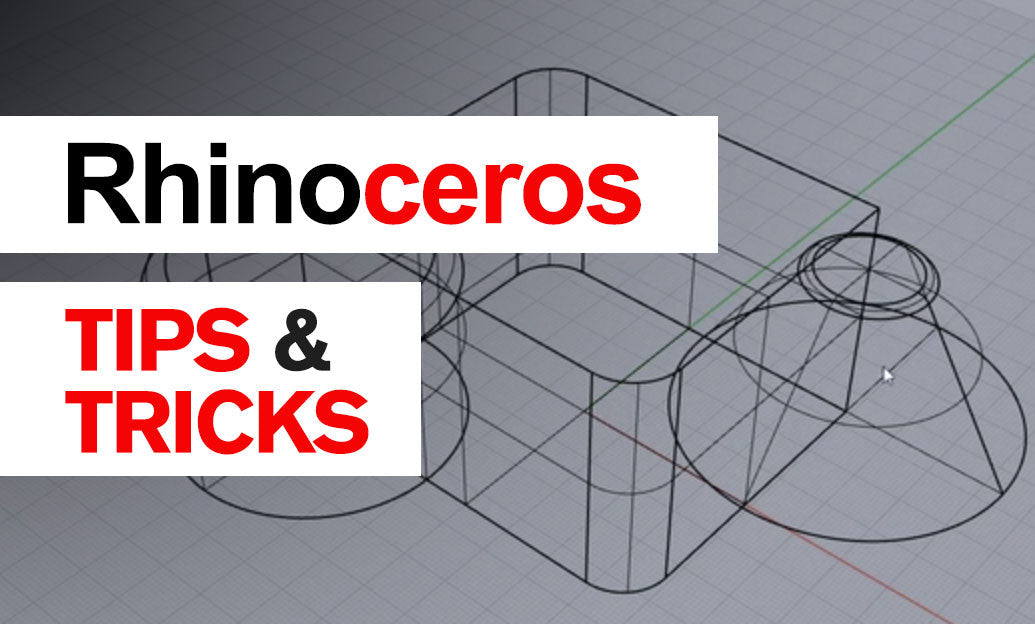Your Cart is Empty
Customer Testimonials
-
"Great customer service. The folks at Novedge were super helpful in navigating a somewhat complicated order including software upgrades and serial numbers in various stages of inactivity. They were friendly and helpful throughout the process.."
Ruben Ruckmark
"Quick & very helpful. We have been using Novedge for years and are very happy with their quick service when we need to make a purchase and excellent support resolving any issues."
Will Woodson
"Scott is the best. He reminds me about subscriptions dates, guides me in the correct direction for updates. He always responds promptly to me. He is literally the reason I continue to work with Novedge and will do so in the future."
Edward Mchugh
"Calvin Lok is “the man”. After my purchase of Sketchup 2021, he called me and provided step-by-step instructions to ease me through difficulties I was having with the setup of my new software."
Mike Borzage
Rhino 3D Tip: Mastering Units and Scale for Precision in Rhino 3D Modeling
October 13, 2024 2 min read

Understanding units and scale in Rhino 3D is crucial for precision and accuracy in your modeling projects. Whether you're designing jewelry, architecture, or products, maintaining a consistent scale and accurate units ensures your designs can transition smoothly from concept to reality. Here are some tips to help you master units and scale in Rhino:
- Set Your Units Early: Before you begin modeling, define your units by going to File > Properties > Units. Choose the unit system that best fits your project needs, whether metric or imperial. This will prevent scale issues later on.
-
Use the Scale Command: If your model needs resizing, use the
Scalecommand. Select the objects you want to resize, specify a base point, and enter a scale factor. This command is useful for maintaining proportions while adjusting size. - Check Your Scale with Dimensions: Utilize the Dimension tools to verify your model's scale. Adding dimensions to key features of your model can help ensure everything is sized accurately before proceeding with more complex operations.
- Model at 1:1 Scale: Always aim to model at full scale. This approach minimizes errors during design and when transitioning to fabrication or construction phases.
- Understand Tolerance Settings: Tolerance settings impact how Rhino handles curves and surfaces. Go to File > Properties > Units to adjust tolerances. A tighter tolerance can result in more accurate models but may require more processing power.
- Convert Units When Necessary: If you need to change units mid-project, use File > Properties > Units to convert. Rhino will adjust the geometry size accordingly, ensuring dimensions remain correct.
- Leverage Templates: Start new projects with templates that have pre-set units and tolerances. This streamlines workflow and ensures consistency across projects.
- Consistent Exporting: When exporting models, ensure the units are set to match your intended use, whether for CNC machining, 3D printing, or collaborating with other software. This prevents scaling issues and ensures compatibility.
By mastering units and scale, you enhance the accuracy and professionalism of your Rhino models. This foundational knowledge not only saves time but also ensures your designs are ready for whatever production process they undergo. For more tips and resources on Rhino 3D, follow @NOVEDGE for the latest updates and insights.
You can find all the Rhino products on the NOVEDGE web site at this page.
Also in Design News

Rhino 3D Tip: Understanding Surface and Solid Modeling in Rhino for Enhanced Workflow Efficiency
August 30, 2025 3 min read
Read More
Unlocking Advanced Animation Techniques: Five Studio-Proven Tricks to Elevate Your 3ds Max Workflow
August 30, 2025 6 min read
Read MoreSubscribe
Sign up to get the latest on sales, new releases and more …



